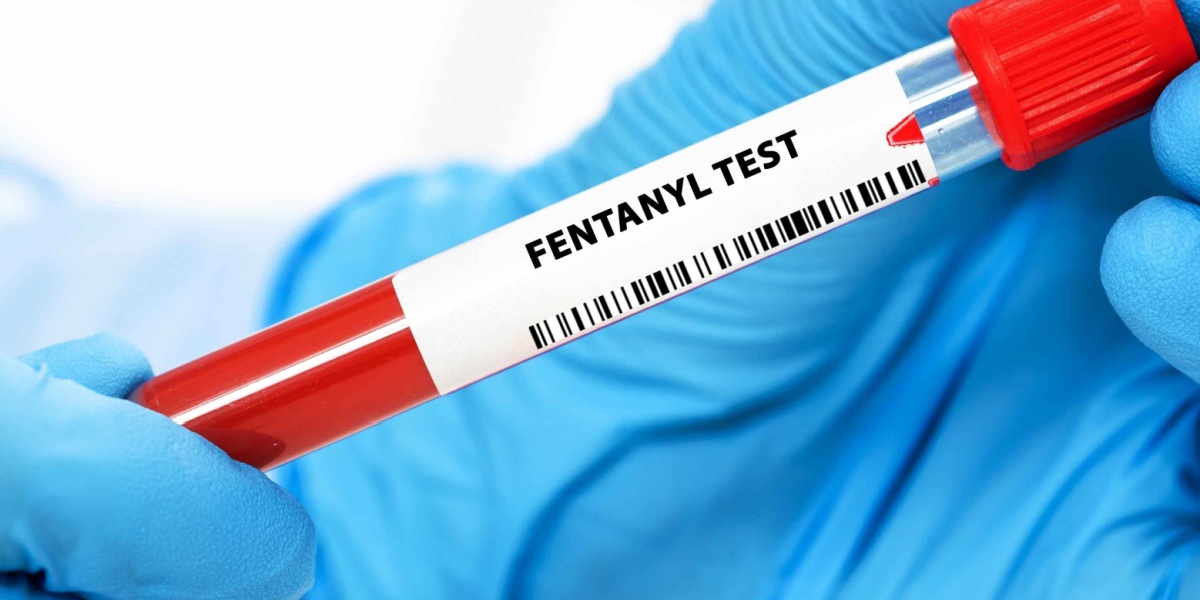Fentanyl is a powerful synthetic opioid that was developed to help with pain management. It is medically offered to some patients, especially those with severe pain following an operation or as a result of cancer. Fentanyl is increasingly used as a recreational drug, however, and can be found as an additive or contaminant in many other illicit substances. It offers a cheap, powerful ‘high’, but is associated with a dramatic rise in overdose deaths throughout the United States.
Fentanyl is broken down quickly by the body, but can be detected for several days in urine and several months after use in hair follicles. This table shows fentanyl detection times by drug test type.
| Test type | Fentanyl detection time |
|---|---|
| Urine | 1-2 days after use |
| Blood | Up to 12 hours after use |
| Hair | Up to 90 days after use |
| Saliva | (Not widely used) |
- Fentanyl is a powerful synthetic opioid approximately 50-100 times more potent than morphine. [1]
- Fentanyl is cleared from your body relatively quickly, but traces can be detected after the effects of the drug have worn off.
- How long fentanyl can be detected depends on many factors, including the type of test, how the fentanyl was consumed, and the size of the dose.

How long does fentanyl stay in your system?
Fentanyl is a fast-acting drug. The effects are typically felt within 2 or 3 minutes of consumption, and it reaches peak plasma concentration within approximately 5 minutes if injected.[2][3] The effects of fentanyl will usually last for around 1-2 hours, although this can depend on factors including the dose taken and any history of fentanyl use.[4]
As fentanyl is removed from the bloodstream, it is broken down (metabolized) into norfentanyl. Approximately 8% of the fentanyl you take will leave your body without being metabolized.[5] Once fentanyl has been metabolized, it still needs to be passed out of the body. 75% of any fentanyl you have taken is excreted in your urine.[1] As a result, urine tests can detect fentanyl after it has left your bloodstream.
Understanding fentanyl half-life and metabolism
Understanding how drugs are removed from the body can be confusing. We measure the half-life of a drug, which is the time it takes for the amount of the drug in the body to reduce by half. We normally consider a drug to be eliminated from the body after 4 or 5 half-lives.[6]
Fentanyl has a half-life of between 3 and 7 hours, meaning that it will usually be cleared from your body after 12-35 hours.[1] How quickly fentanyl leaves your body can be affected by your overall health, method of consumption, and dosage.
Half-life of fentanyl vs. fentanyl patches
Fentanyl patches have a longer half-life than fentanyl itself. [7] Although the drug is the same, fentanyl can continue to be absorbed through the skin and enter the bloodstream, even after the patch has been removed. More fentanyl is being added into your bloodstream at the same time as it is being metabolized and removed. As a result, the half-life of fentanyl patches is usually closer to 17 hours.
Discarded fentanyl patches can still contain up to 84% of the original dose, even after use.[4] As a result, fentanyl is sometimes extracted from old patches and used in other ways, such as through injection. Because the drug is not being absorbed through the skin, this fentanyl would still have a half-life of 3-7 hours.[4]
Fentanyl detection times by test type
Most standard drug tests look for morphine to see whether you have been taking opioids. Most conventional opioids, such as heroin, are metabolized into morphine and will be recognized by these tests. Fentanyl, like some other synthetic opioids, does not produce morphine as it is broken down. As a result, fentanyl will not show up on a standard drug test.[8]
Fentanyl is generally only detected in specialized tests designed to test for fentanyl itself.
Urine tests
Urine tests can show whether you have taken fentanyl within the last 1-2 days.[8]
These tests look for any fentanyl that has not been metabolized in the body and is passed out in urine. Some urine tests may be able to identify the metabolite norfentanyl, which can increase their sensitivity. If these become more precise and more commonly used, this may slightly increase the detection window.[5]
Blood tests
Blood tests can show whether you have taken fentanyl within approximately 12 hours of the test.
Saliva tests
Saliva tests are unreliable when testing for fentanyl. They’re not commonly available or used.[9]
Hair tests
Hair tests can detect fentanyl use for up to 90 days, though this depends on several factors. These tests do not show usage immediately, however. It can take a few days after use for traces of fentanyl to appear in your hair.[10]
Segmented hair tests can detect when you used fentanyl, with each 1cm of growth relating to approximately one month. These tests are expensive, however, and are not used often.[11]
Hair drug tests use a cutoff, where a small amount of a drug is considered to be a negative test, and any amount over a threshold is considered a positive test. As a result, hair tests can miss small amounts of fentanyl use.[11] Another complication is that African American hair can contain higher levels of drugs than Caucasian hair, even when the same quantities of drugs have been consumed.[12]
Factors affecting fentanyl detection
Fentanyl is metabolized at different rates by different people. Here are some of the factors that can influence how quickly fentanyl is removed from your body and, therefore, how long it will show up on a blood or urine test.
- Dosage: High doses take longer to leave
- Chronic use: Chronic use can leave traces that last longer
- Personal metabolism: People with a fast metabolic rate will clear the drug faster
- Health: Being in good health will usually allow you to metabolize fentanyl faster
- Method of consumption: Injected fentanyl is faster to clear than if smoked or snorted
Busting myths: Can you get fentanyl out of your system faster?
Fentanyl is removed from your body relatively quickly, and there are no herbal supplements or other substances that can make a meaningful difference in how long this takes. Taking a diuretic (a substance that makes you urinate more) may slightly reduce the detection period, but fentanyl can still be detected in weak urine samples.
Cutting your hair can limit how long a hair follicle test can detect drugs, but all bodily hair can be used for these tests. If you have been required to undertake hair follicle testing, shaving your head and body hair may be interpreted as an admission that you have taken illicit drugs.


-(1)-guide-detail.jpg?v=1756808686)
-guide-detail.jpg?v=1722503514)
